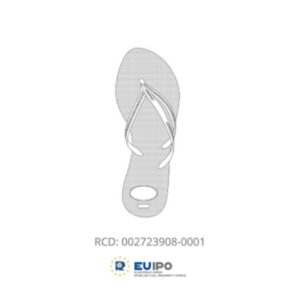Although a trade mark application will not be refused simply because a similar or identical mark already exists, the question of confusion under relative grounds should be given serious consideration when deciding on a new brand for a product or service. If the mark is challenged or infringement proceedings are brought then the following provisions are likely to be an issue:
The relative grounds for refusal are given under s.5 of the 1994 Trade Mark Act and are split into three different provisions, relating to the perceived level of identicalness and similarity of the goods and the marks.
The ECJ defines identity as being where a sign reproduces without any modification or addition, all elements constituting the trade mark, what SA Societe LTJ Diffusion v Sa Sadas calls ‘two elements’ being ‘the same in all respects’. Yet, this is somewhat controversial, as the tests of s.5(1) are carried out from the view of the average consumer, so they usually consider the whole and ignore small differences.
The identicalness of the goods, on the other hand, is more straightforward. The definition in s.5(1) states that ‘if the category of goods protected by an earlier mark is broader than, but includes, the category of goods to which the application relates, then the applicant’s goods are identical with those of the earlier mark’.
Returning to the similarity of marks, then, covered by s.5(2)(b) a ‘global appreciation approach’ must be taken. This was specified in Sabel BV v Puma AG and confirmed in Canon Kabushiki v MGM, Lloyd Schuhfabrik v Klijsen Handel and Marca Mode CV v Adidas AG. Essentially, this means that the marks must be compared as wholes, in the same way an average consumer would view them, i.e. with focus on their most distinctive features. Specifically, the aural, visual and conceptual similarities will be examined and inherent or acquired distinctiveness will be taken into account.
As consequence of this, it will be assessed whether there is a likelihood of confusion by the public (proviso s.5(2)), which includes an analysis of how likely they are to form an association with the earlier mark. Again, as the ECJ specified in Sabel, a global approach is taken; but, a mere association between two trade marks is not enough to conclude that a likelihood of confusion exists.
It should be pointed out that Davidoff v Gofkid Ltd. covers marks that are identical or similar, and (since Davidoff) goods that are identical or similar, in situations where the earlier mark is of repute and the new mark would, ‘without due cause, take unfair advantage of or be detrimental to the reputed mark’s distinctiveness or reputation’. Reputation in this instance, as defines in General Motors v Yplon, means ‘being known by a significant portion of the relevant public throughout a substantial part of the relevant Member State, including the mark’s duration and extent of use, its market share, and its level of promotion’.
In Intel Inc v CPM UK Ltd, the court identified three types of injury for which marks of repute are protected under s.5(3). Firstly, ‘detriment to the mark’s distinctive character’, which, according to Adidas-Solomon v Fitness Trading Ltd, comprises a ‘gradual whittling away or blurring and tarnishing of a mark’.
The second and third injuries comprise of (‘detriment to the repute of the mark’, especially when the product seems to be sub-standard in comparison to the original one) and (‘unfair advantage taken of the mark’s distinctive character or repute’). This was considered in L’Oreal v Bellure, where it was held that ‘the more immediately and strongly the mark is brought to mind by the sign, the greater the likelihood that the current or future use of the sign is taking, or will take, unfair advantage of the distinctive character or the repute of the mark is, or will be detrimental to them’.
By Katharina Barker / Law Student at Southampton Solent University











